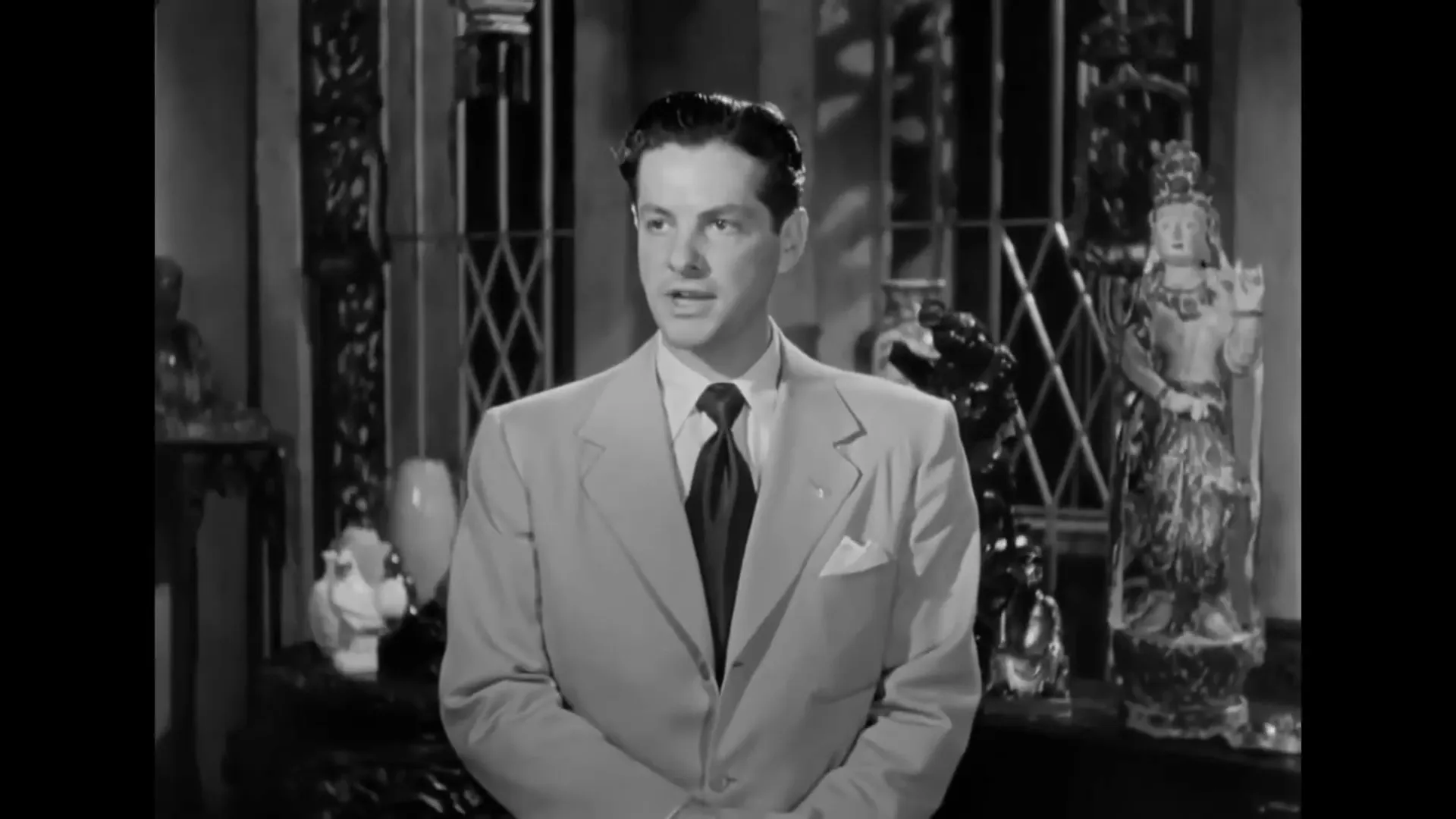The Chase (1946), directed by Arthur Ripley and produced by Seymour Nebenzal, is a film noir movie that sits at the crossroad of pulp melodrama and psychological experiment. Based on Cornell Woolrich's novel The Black Path of Fear and adapted for the screen by Philip Yordan, the film has haunted cinephiles for decades with its restless storytelling, dream-frame solution, and bleak romantic fatalism. This review and critical study approaches The Chase as both a period piece of postwar malaise and a bold example of how the film noir movie could reach into the subconscious to stage crime, paranoia, and yearning.
Outline
- Introduction and context: The Chase and its place in noir
- Production background and screenplay decisions
- Plot synopsis with scene analysis
- Character studies: Chuck Scott, Lorna Roman, Eddie Roman, and Gino
- Direction, cinematography, and music: how the film achieves its mood
- Major themes: dream logic, fatalism, power and escape
- Critical reception, legacy, and the film’s standing among film noir movies
- Final thoughts and recommendations
Introduction: Where The Chase Fits in the Film Noir Movie Canon
The Chase arrives in the aftermath of the Second World War as a film noir movie attuned to dislocation and psychic unrest. The story focuses on a veteran drifter, Chuck Scott, whose postwar trauma manifests not only in anxiety but in hallucinatory fugues that propel the plot forward. Robert Cummings portrays the uncertain, goodhearted Scotty; Michèle Morgan embodies the trapped beauty Lorna Roman; and Steve Cochran gives the cynical, dangerous Eddie Roman a chilling, manipulative presence. Peter Lorre's Gino adds the classic noir touch of the nervous, lethal henchman. Together, these performances frame The Chase as a film noir movie that is as much about internal danger as it is about external criminality.
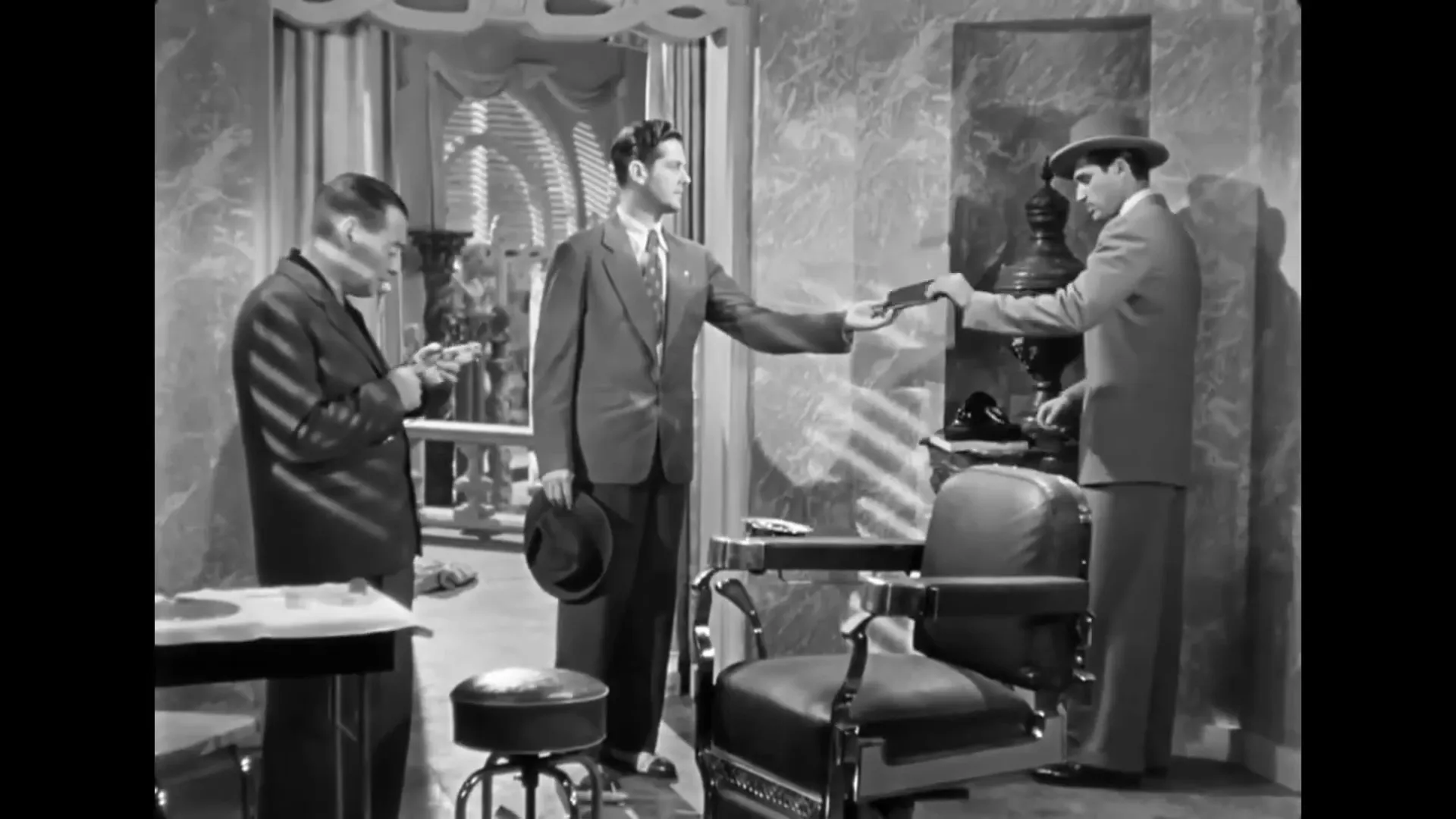
Production Background and the Screenplay: Adapting Woolrich for a Film Noir Movie
The genesis of The Chase is intentional in its noir pedigree. The screenplay, penned by Philip Yordan, adapts Cornell Woolrich's 1944 novel The Black Path of Fear, a story already steeped in doomed romance and atmospheric dread. Woolrich—whose fiction frequently explores fate, mistaken identity, and the inexorable pull of violence—provided fertile soil for a film noir movie that would foreground terror through both circumstance and interior states.
Producer Seymour Nebenzal bought the rights with a clear intent to translate Woolrich's fiendish plot to the screen. As with many adaptations of the era, the production had to conform to the Motion Picture Production Code; the solution in The Chase was stylistic as much as narrative: much of the film's most morally ambiguous action is framed as a dream sequence so protagonists could be exonerated in a moralistic cinematic climate. This structural choice—controversial then and now—makes The Chase a film noir movie that self-consciously manipulates audience sympathy and rules of causality.
Production history matters to interpretation. The film's casting underwent significant changes: Joan Leslie was originally considered, then replaced by Michèle Morgan amid studio quarrels. That shuffle, along with on-set strikes and scheduling problems, altered the film’s production rhythm and likely influenced Ripley’s visual and rhythmic decisions. The cast that remained—Robert Cummings, Michèle Morgan, Steve Cochran, Peter Lorre, Jack Holt, and Lloyd Corrigan—coalesced into a unit capable of delivering the film noir movie’s characteristic tension.
Plot Synopsis and Scene-by-Scene Analysis
The Chase is compact—an 86-minute exercise in urgency and disorientation. The core narrative is deceptively simple: a drifter returns a lost wallet to a violent gangster and finds himself hired as a chauffeur. From that premise, the film noir movie unfolds into a nocturnal odyssey of desire, escape, and the nightmare of being framed for murder.
Inciting Incident: Honesty Meets Crime
Chuck Scott, a veteran and wandering soul, finds a wallet and returns it to its owner, Eddie Roman. The moment is small, and yet it catalyzes everything. Roman, dangerous and controlling, hires Scott as his driver—an act that is half reward, half recruitment. The film noir movie uses this exchange to trap the protagonist in a gilded cage: the job offers stability but chains him to danger.
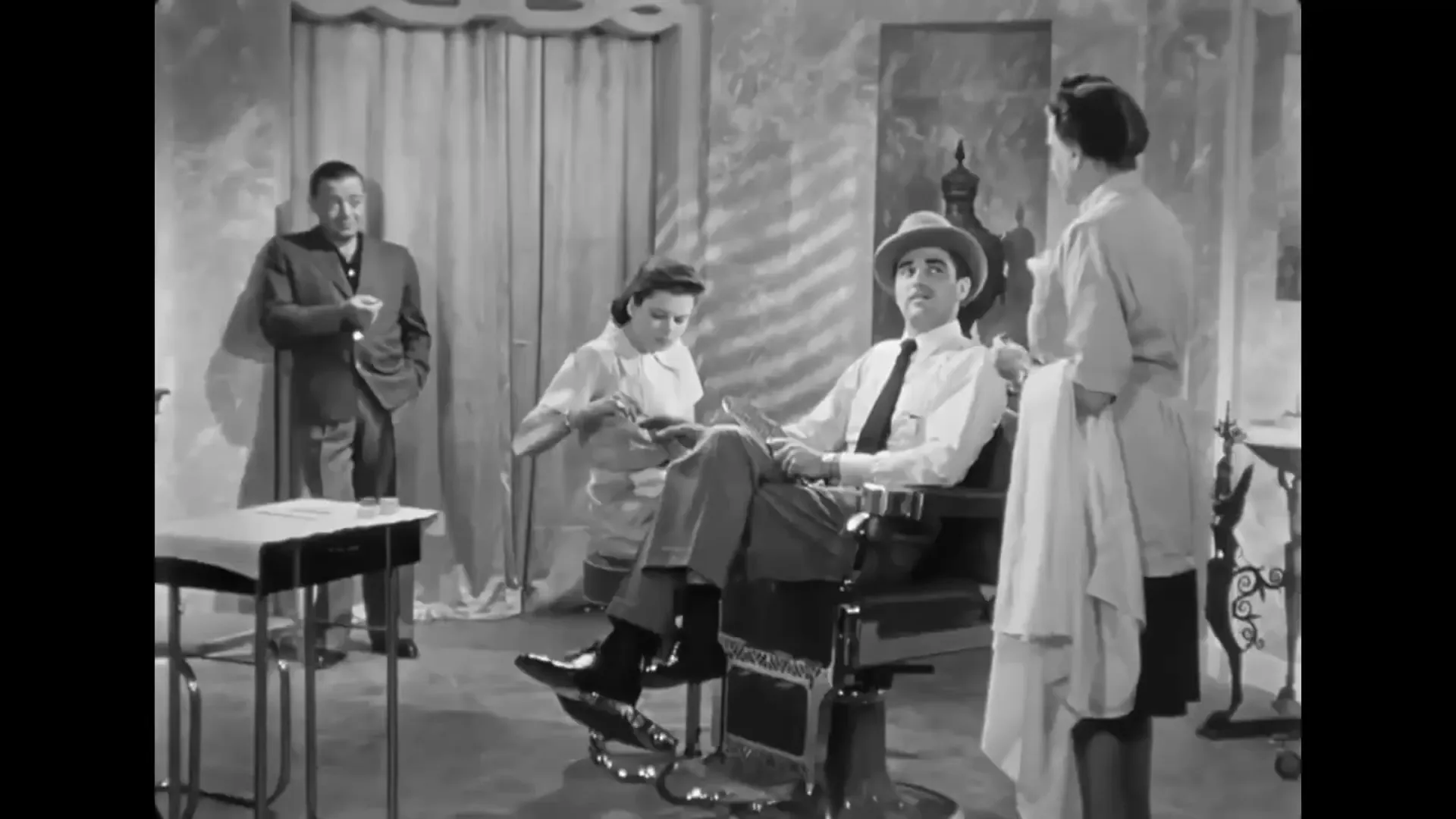
Roman’s Test: The Accelerator from the Rear Seat
Roman's peculiar test of his new chauffeur—a hidden accelerator controlled from the rear passenger compartment—serves as a grotesque metaphor for power and surveillance. The scene unnerves both the chauffeur and the audience: a driver who cannot fully control his own vehicle epitomizes the film noir movie’s exploration of agencylessness. The test marks Scott as susceptible to manipulation and physically demonstrates Roman’s dominance. The clip at 11:56 in the transcript underscores how technology (or mechanical trickery) becomes a narrative device to show control and menace.
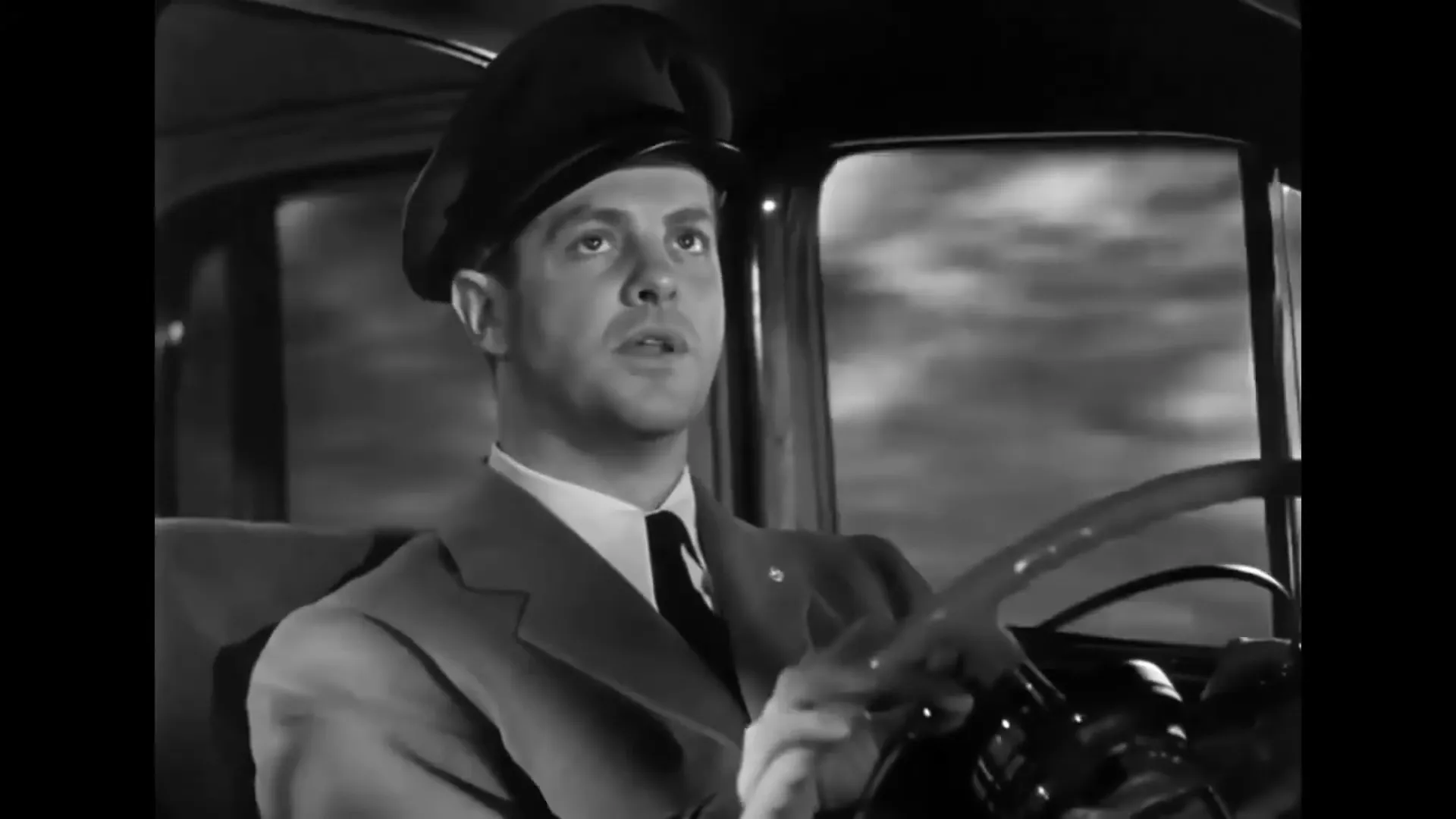
Lorna and the Promise of Escape
Lorna Roman is the classic noir heroine trapped by a powerful husband. She speaks of Havana as a place she longs for and as a symbolic escape—cheap hotels, cheap restaurants, cheap friends, but also a place where she might reinvent herself. When she asks Scotty to take her to Havana for a thousand dollars, he agrees, and an intimate, tragic love story begins. This exchange crystallizes the film noir movie’s recurring theme: love as a desperate bid for freedom that often accelerates toward catastrophe.
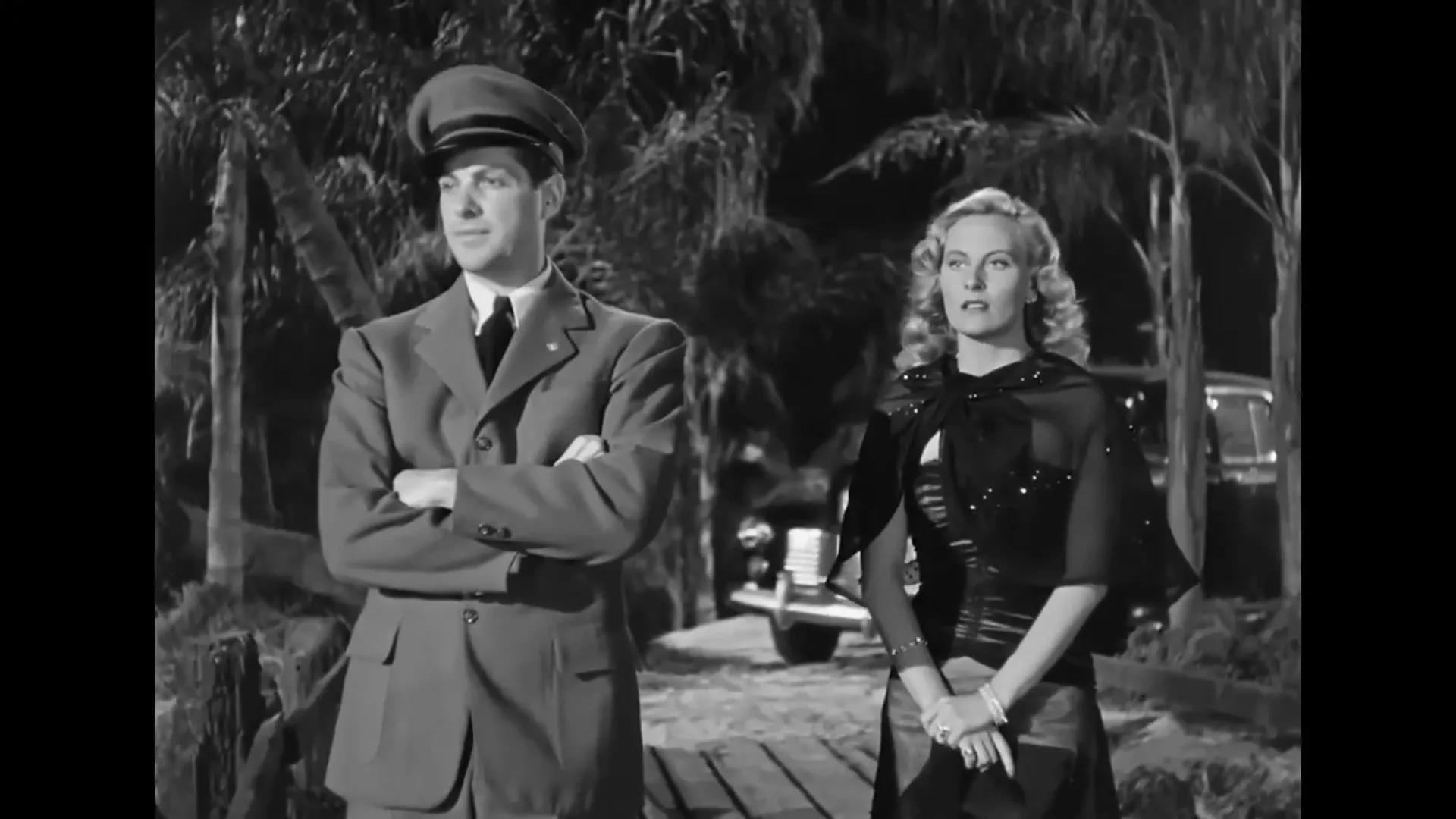
Havana: Night Club, Murder, and Framing
Havana is not just a destination; it is the site of a multifaceted noir operation. In a nightclub sequence, Lorna is stabbed to death. Evidence—circumstantial and carefully planted—points to Scotty: he appears to have purchased a knife identical to the murder weapon earlier that day. The club’s flash photographs (mentioned in the transcript) become a possible means of exoneration, but those too are neutralized by Roman’s henchmen. In short order, Scott is the prime suspect, and the film noir movie pivots into a chase of a different kind: escape from the law and the criminal network that framed him.
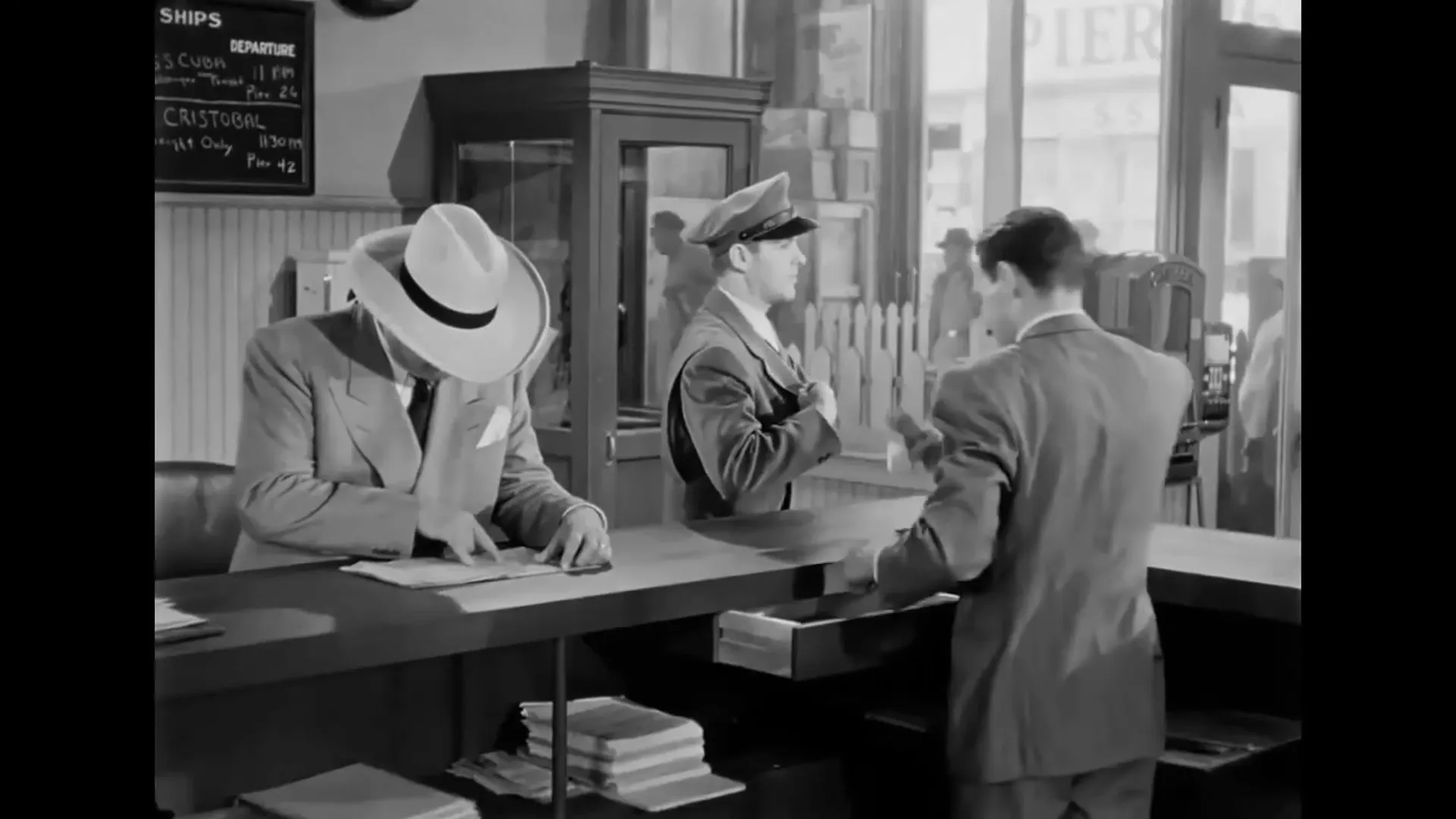
The Frame-Up and the Nightmares
Scott’s descent into suspicion, interrogation, and escape is classic noir: powerless hero, corrupt or incompetent institutions, and an ineluctable tightening of circumstances. The investigative sequences—questioning by Lt. Acosta and the examination of the knife with its monkey motif—illuminate both the story’s clever plotting and the film noir movie’s appetite for intricate coincidences that feel like fate.
Dream Logic and the Rewind
In an audacious structural move, much of the film’s chain of events is later revealed to have occurred as a kind of dream or hallucination, tied to Scott's battle trauma and anxiety neurosis. Scott awakens in Miami, sweating and disoriented, taking his pills and seeking help from Commander Davidson. The revelation reframes the story without entirely dissolving its emotional truth: the nightmare sketches the desires and fears that keep Scott prisoner, and through cinematic artifice the film noir movie allows him an escape from fatal retribution while retaining thematic weight.
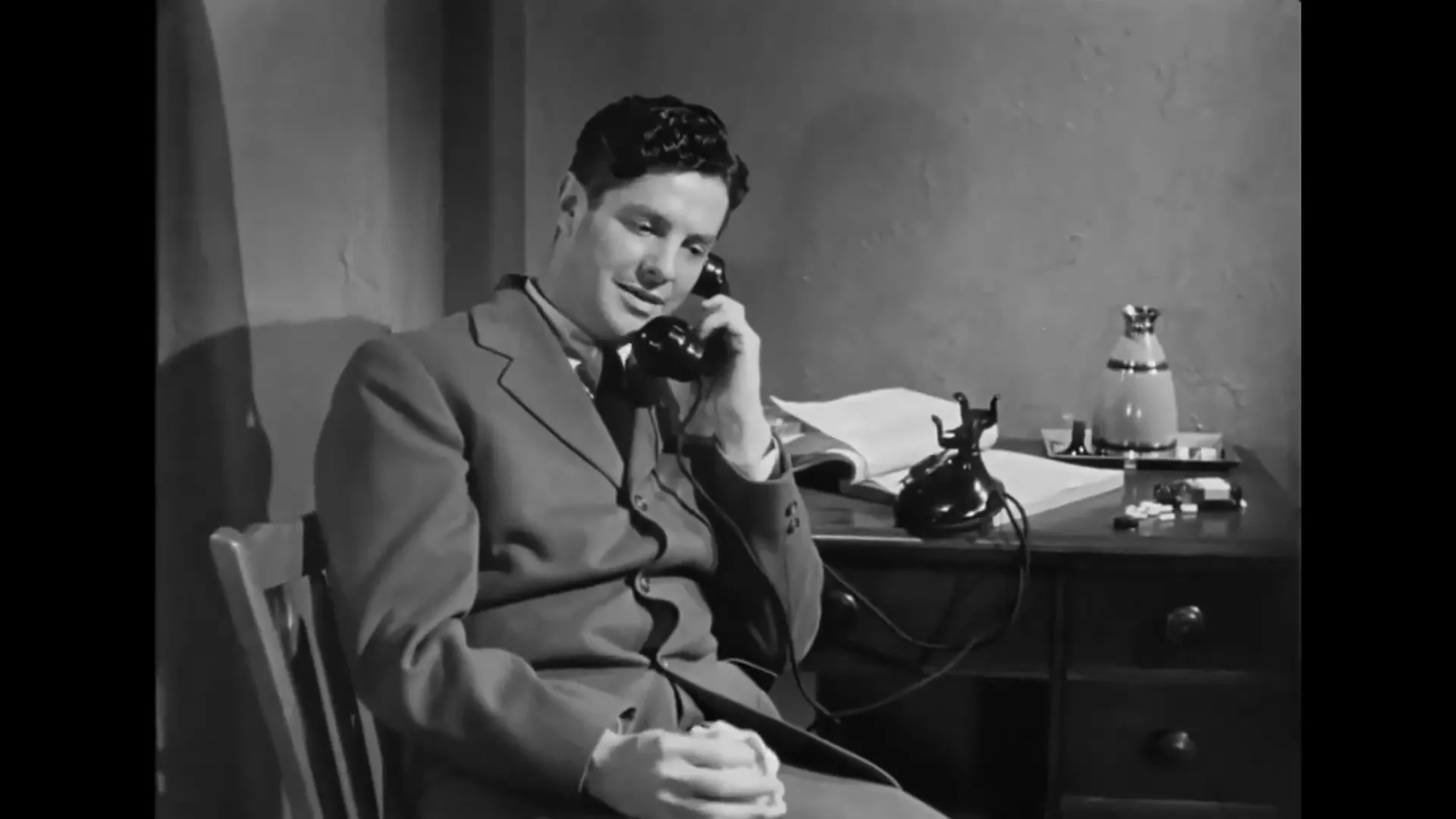
Resolution: Crash, Liberation, and Ambiguity
The film concludes with a high-speed crash involving Roman and Gino. With the men gone, Scott and Lorna can finally board a ship to Havana, the dream of escape becoming a complicated reality. The film noir movie closes on a bittersweet note: freedom for the lovers but at a cost—a typical noir denouement in which redemption is purchased with violence and loss.
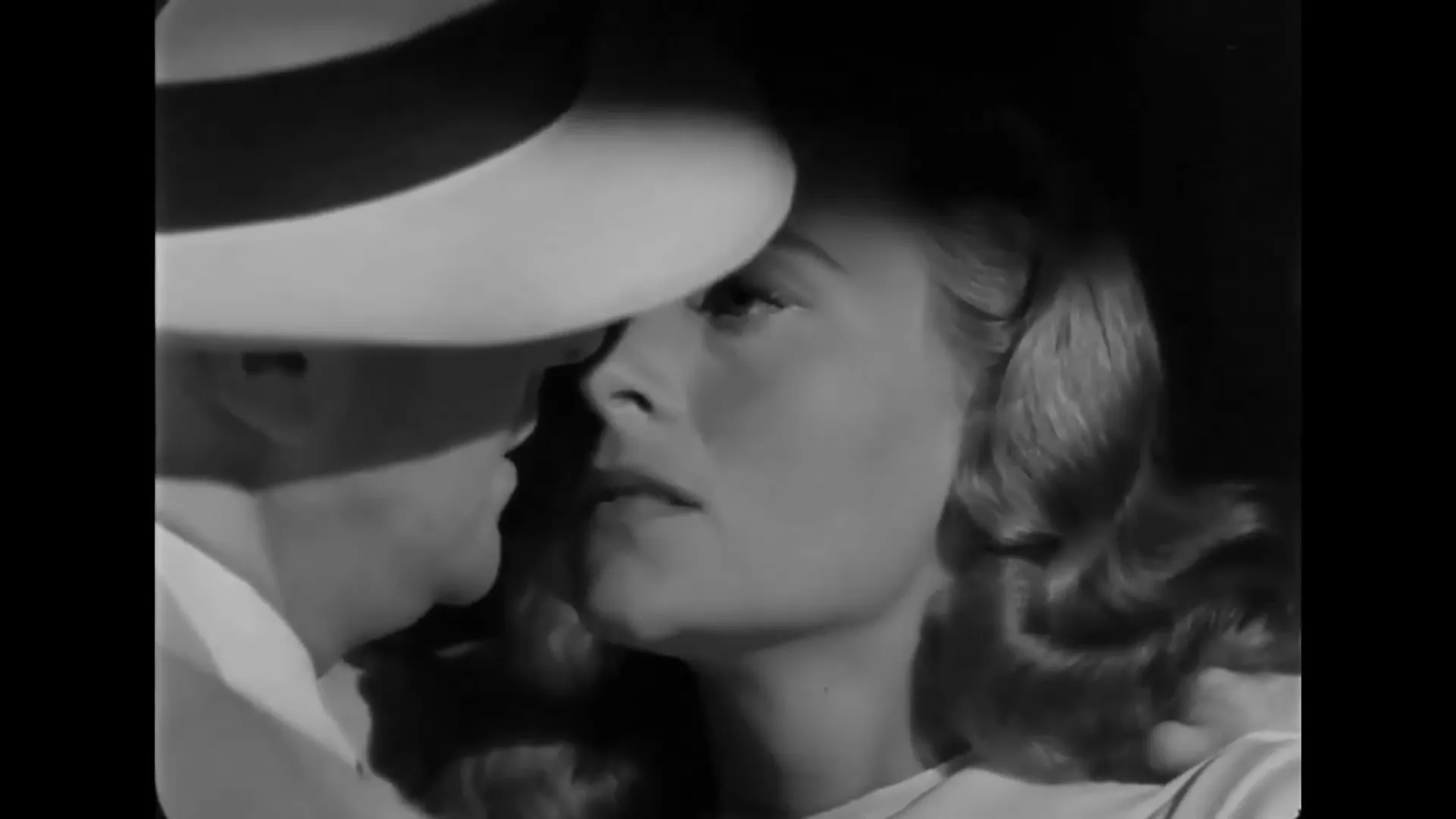
Character Studies
Chuck Scott (Robert Cummings)
Chuck Scott is the moral center of the film noir movie, a veteran whose war experience has left him fragile. He is good-natured, honest to a fault, and susceptible to romantic devotion. The screenplay casts Scott as both an active agent—he consents to Lorna’s escape plan—and as a passive subject of forces beyond his control. Robert Cummings plays this with a likable vulnerability that makes the character’s descent into suspicion credible and poignant.
Lorna Roman (Michèle Morgan)
Lorna is the film noir movie's classic trapped beauty: elegant, weary, and quietly defiant. Michèle Morgan’s performance channels a European coolness while allowing for profound tenderness. Her desire to leave—literal and symbolic—drives the plot. Morgan’s Lorna is not simply a victim; she is a participant in her own destiny, however constrained. Her death (in the dream sequence) is the cruel narrative fulcrum that transforms the story into a thriller.
Eddie Roman (Steve Cochran)
Eddie Roman is the archetypal noir gangster: charismatic, dangerous, and possessive. Steve Cochran injects him with an unsettling charm, making Roman a believable figure of malevolent control. Roman’s mechanical trick—the rear-seat accelerator—functions as his character distilled: a man who asserts control through ingenuity and cruelty. In the context of a film noir movie, Roman is at once a social predator and the embodiment of a patriarchal force that seeks to contain and own a woman’s life.
Gino (Peter Lorre)
Peter Lorre’s Gino is both comic and monstrous, a henchman with a white-knuckle intensity. Lorre, always compelling, brings a neurotic, animal quality to his scenes that amplifies the film noir movie’s sense of danger. Whether plotting to destroy evidence or stalking the protagonists, Gino's presence is a reminder that the criminal world is both bureaucratically efficient and unhinged.
Direction, Cinematography, and Music
Arthur Ripley directs The Chase with a willingness to embrace surreal, dreamlike imagery while keeping the narrative's pulse taut. Cinematographer Frank F. Planer employs shadows, framing, and movement to fuse realism with nightmare. The rear-seat accelerator scene, the nightclub interior, and Havana’s docks are framed to maximize claustrophobia and unease—key features of a film noir movie's visual vocabulary.
Michel Michelet’s score negotiates the space between romantic yearning and pulsing dread. Music in a film noir movie is often a psychological collaborator, and Michelet’s compositions underscore Scotty’s internal turmoil and the film’s shifting tempos—from intimate exchanges to chases and interrogations.
Major Themes Explored
Dream Logic and the Postwar Psyche
The Chase is one of the more explicit American films to use dream logic as a structural device. The frame—revealing significant portions of the narrative as the protagonist’s nightmare—allows the film noir movie to stage transgressive acts and perilous romances without fully committing to their real-world consequences. In the context of postwar America, the narrative device speaks to veterans’ collective anxieties, the persistence of war trauma, and the difficulty of reintegration.
Power, Surveillance, and Control
Roman’s rear-seat accelerator is a vivid metaphor for surveillance and control. The driver deprived of agency and the woman confined by marriage both exemplify the film noir movie’s exploration of power asymmetries. Control in The Chase is mechanical and psychological, enforced through violence, manipulation, and the orchestration of evidence.
Fatalism and Romantic Yearning
Woolrich’s fiction often features lovers bound by fate, and The Chase inherits that fatalism. Scotty and Lorna’s yearning for escape is sincere but is constantly intercepted by forces larger than themselves. The film noir movie marketplace favored stories in which desire pulled people toward ruin; The Chase wears that tradition on its sleeve but complicates it with the dream-frame solution, which both softens and intensifies the fatalism.
Production Code, Editing Choices, and Narrative Ethics
An important aspect of The Chase’s narrative design is how the production negotiated the Production Code. The decision to frame much of the action as a dream was practical—allowing illicit actions without moral culpability—and artistic, generating ambiguity about responsibility. The editing (Edward Mann) stitches the dreamscape to the diegetic reality in ways that unsettle: images recur, motifs repeat, and the distinction between memory and fantasy is deliberately porous. This technique made The Chase a film noir movie that tested the boundaries of what mainstream Hollywood could depict in the late 1940s.
Critical Reception and Legacy: How The Chase Became a Cult Film Noir Movie
Upon release, The Chase elicited mixed reactions. Contemporary critics noted both flaws and suspense. The film was entered in the 1947 Cannes Film Festival, signaling its ambition. Gene Arieel praised its suspense and performances; Leyen Decker called it fascinating but criticized the dream payoff as an easy solution. These critiques are telling: The Chase dared to be ambitious—and critics were split on whether its risks paid off.
Retrospective scholars and critics have been kinder. J. Hoberman observed the film’s arty qualities and surreal poses, while Eddie Muller compared it to the subconscious cinema of later filmmakers, noting that The Chase “is as close as any '40s film came to the subconscious cinema of David Lynch.” Critics Alain Silver and Elizabeth Ward highlighted the film’s success at approximating Woolrich's oppressive atmosphere: “Phantom Lady excepted, The Chase is the best cinematic equivalent of the dark, oppressive atmosphere that characterizes most of Cornell Woolrich's best fiction.”
Though not a financial hit, The Chase became a cult favorite precisely because it refused easy categorization. It is a film noir movie that blends pulp mechanics with psychological experiment, and its influence is visible in later works that dramatize the dreamscape as narrative engine.
The Chase and Cornell Woolrich: Literary DNA in a Film Noir Movie
Woolrich’s stories often hinge on ordinary people caught in extraordinary, suffocating circumstances. The Chase imports that DNA wholesale. The novel’s fiendish plotting—praised by The New York Times at publication—translates to a screenplay that values suspense, coincidence, and a sense of inevitable doom. Where the filmmakers diverge from the novel is in the moral tidy-up enforced by the Production Code. Woolrich’s darker, more punitive endings sometimes softened for the screen, but the emotional logic remains: lovers trapped by bigger systems, a relentless sense of being pursued, and the terrifying possibility that the world conspires to misread and misjudge.
Comparisons: The Chase Among Film Noir Movies
What distinguishes The Chase among film noir movies is its sustained flirtation with surrealism and the interior life. While many noir films of the 1940s emphasize criminal investigations, corrupted institutions, or femme fatales, The Chase invests in the protagonist’s inner disarray. The dream frame invites viewers into a psychological labyrinth more often associated with European art cinema. Yet the film retains the noir staples: shadowed cinematography, femme inescapably linked to danger, and moral ambiguity.
In terms of style and mood, The Chase shares affinities with other Woolrich adaptations—Phantom Lady, Night Has a Thousand Eyes, and the many noir tales that convert literary dread into cinematic anxiety. But The Chase’s dream framing and its willingness to bend narrative rules give it a singular place in the film noir movie lineage.
Notable Scenes and Shot Composition
Several sequences in The Chase demonstrate Arthur Ripley and Frank F. Planer’s mastery of noir imagery:
- The wallet-return prologue: an ordinary act of honesty becomes the story’s fateful pivot.
- The rear-seat accelerator test: a low-angle, close-framed design that communicates claustrophobia and lack of control.
- The beach and Havana sequences: wide vistas promise escape but are undercut by constricting camera moves and shadowed interiors.
- The nightclub and murder: quick cutting and chiaroscuro lighting create confusion and the impression of a manipulated frame.
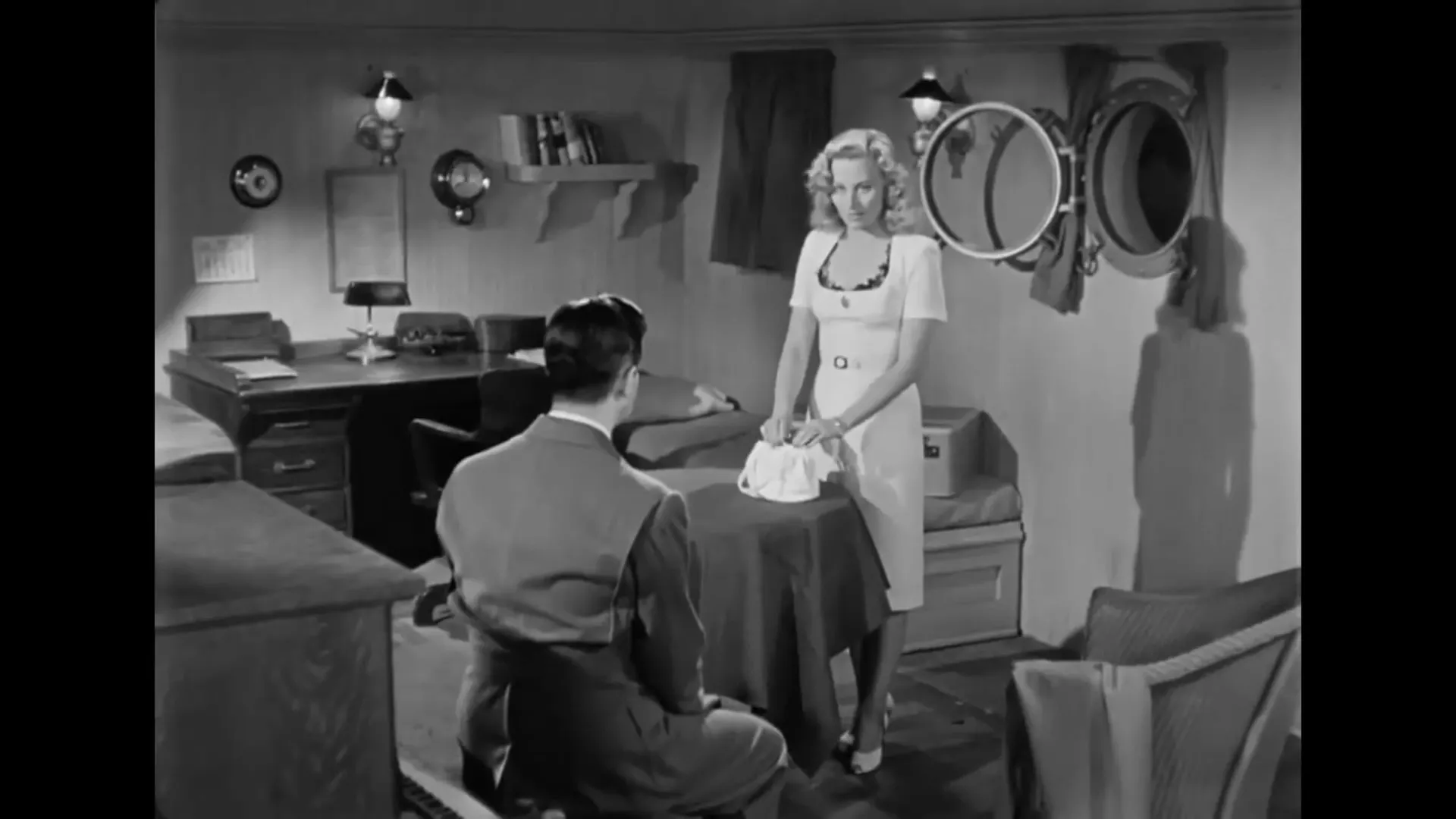
Why The Chase Still Matters as a Film Noir Movie
The Chase is worth revisiting because it offers a different model of noir: one where psychological states drive plot and where the dream is permitted to stand as narrative fact (or counterfact). Its formal audacity—framing moral transgression as hallucination—was a risk that resisted both simple condemnation and easy praise. Over time, critics and cinephiles recognized its value as an uneasy, evocative film noir movie that anticipates later explorations of subjectivity in cinema.
Moreover, the performances anchor the film’s experimental impulses. Robert Cummings’ vulnerability, Michèle Morgan’s restrained expressiveness, Steve Cochran’s predatory swagger, and Peter Lorre’s nervous menace cohere into a cast that can sustain both melodrama and introspection. The Chase’s status as a cult film noir movie depends on the way these elements combine to create an atmosphere both familiar and disorienting.
Archival and Scholarly Notes
From a production standpoint, The Chase underwent notable adjustments to satisfy censors and social expectations. Changes included reframing deaths and shifting the ending to avoid punitive outcomes that would contravene the Production Code. These editorial decisions reflect the period's moral strictures but also created the film’s defining structural quirk: the dream frame. For scholars of noir and adaptation, The Chase is therefore a text about compromise—between novelistic fatalism and studio moralism—and about the imaginative ways artists navigated those constraints.
Scholars have also explored The Chase’s debt to Woolrich’s atmosphere. Woolrich’s fiction thrives on coincidence and inexorable doom; Ripley and Yordan adapted that mood into cinematic terms by layering repetition, motif, and recirculating images. Critics such as Eddie Muller have pointed out the film’s affinity with later, more overtly surreal filmmakers; such readings place The Chase within a lineage of American cinema that moves from documentary realism toward psychological abstraction.
Recommended Viewing and Comparative Films
For viewers who appreciate The Chase as a film noir movie, several other titles are useful companions:
- Phantom Lady (1944) — another Woolrich adaptation with a claustrophobic atmosphere and a femme figure at its center.
- Night Has a Thousand Eyes (1948) — shares Woolrich’s preoccupation with fate and doom.
- Out of the Past (1947) — classic noir on betrayal and fatalism, to contrast The Chase’s dream logic with a more procedural bleakness.
- Laura (1944) — to compare representations of longing, memory, and the idealized female figure in noir.
Conclusion: The Chase as a Dreaming Film Noir Movie
The Chase (1946) is a film noir movie that refuses to settle comfortably into either pulp thrill or psychological case study. Its hybrid ambition—part gangster melodrama, part subconscious cinema—makes it a fascinating artifact of postwar Hollywood and a rewarding object of study for film noir aficionados. The film’s dream-frame solution will always be controversial, but that very controversy is what gives the film its persevering interest: it asks viewers to consider not only what happens but how and why cinema might depict what happens as a dream.
In the end, The Chase’s power is its insistence on the mind as battleground. The threats in the film noir movie may come from the streets or from the peculiarly invasive control of men like Eddie Roman, but they also arise from memory, fear, and desire. Arthur Ripley’s film navigates those dangers with a blend of pulp energy and stylistic daring. For viewers seeking a film noir movie that blends the expected with the uncanny, The Chase remains an essential—and strangely modern—experience.
Those drawn to noir's dark lyricism and to Woolrich's fatal imagination will find much to admire in The Chase: bold narrative gambits, memorable performances, and an atmosphere of dread that lingers long after the credits roll. As a film noir movie, it is not tidy; it is, however, indelible.
